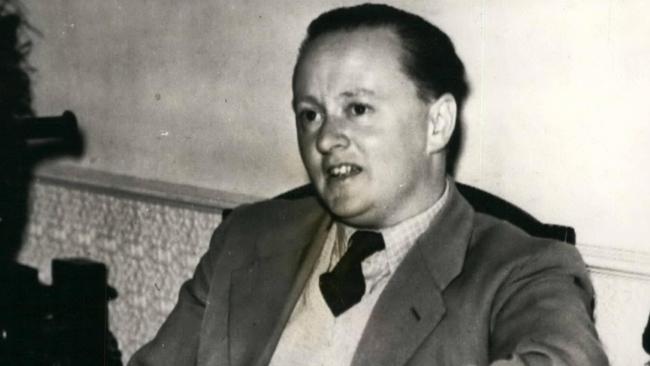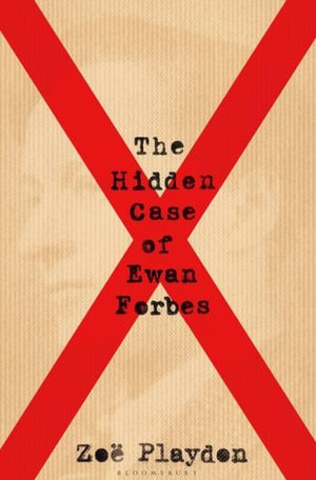Jarring notes in tale of transgender baronet
It took five years of reading legal decisions and medical literature to piece together Ewan Forbes-Sempill’s life story. What Zoe Playdon uncovered was jaw-dropping.

As a child, Ewan Forbes-Sempill moved between a mansion near Balmoral and Craigievar Castle, the ancestral family seat. In his pre-teen years, before and during the First World War, he hunted, wrestled, lassoed cattle and raced around on his pony. But the name on his birth certificate was Elisabeth and he was registered as a girl.
Zoë Playdon first heard of Ewan in 1996 when she and a group of lawyers were mulling over a “crushing defeat” in the UK High Court. A leading campaigner on LBGT rights, she had been trying to find out why the right for trans people in the UK to have birth certificates “corrected” had suddenly evaporated in the late 1960s.
This, she argues, left them in a cruel legal limbo that encouraged discrimination and robbed them of their rights.
It took two years for Playdon to get hold of a 500-page court transcript of “the hidden case of Ewan Forbes”. It was only when she retired, in 2014, that she had time to examine it forensically, in the context of archival material about Ewan’s life.
It took five years for her to piece it together: five years of ploughing through legal decisions, medical literature, trans confessionals, personal interviews and media reports. And what she found was jaw-dropping.

In his memoir, The Aul’ Days, published in 1984 when he was 72, Ewan gave no hint that he had ever been seen as anything other than a boy. He didn’t mention the “cultural tour” his mother took him on in his teens, which included visits to medical specialists in Vienna, Budapest, Dresden and Prague. He certainly didn’t mention the hormone treatment or psychotherapy he had in Munich when he was 19.
He went on to train as a doctor and bought a farm with 3,000 acres, which meant he could be called Laird of Brux. He was a pillar of his local community and of his local kirk.
In 1950 he proposed to Isabella (“Patty”) Mitchell, the daughter of a hill farmer in the Cairngorms. There was a hitch, of course. But he managed to use his extensive contacts to get the sex on his birth certificate changed. The two married, lived happily, and all went swimmingly until Ewan’s brother died and his cousin John claimed the right to the family baronetcy.
The peaceful life that Ewan and Patty had built was now under serious threat. John could claim the baronetcy only by proving he was the sole male heir. Which meant Ewan had to risk a court case, publicity and the loss of everything he had worked so hard to get. If he was found to be female, he wouldn’t just lose the baronetcy. His marriage would be seen as perjured and he and Patty could both face jail.
There are so many twists and turns in the tale that follows that it sometimes reads like a thriller. The case Ewan concocted to prove he was male is almost literally cock and bull, involving the sudden appearance of a testicle. The miracle is that his medical witnesses went along with it, although they were careful not to perjure themselves.
What I didn’t find convincing was the polemic. Playdon believes the Forbes case was suppressed because the verdict – that Ewan could keep the baronetcy because he was “a true hermaphrodite in whom male sexual characteristics predominate” and therefore, Playdon adds, that his “psychological sex” was male – threatened the age-old line of primogeniture.
She may be right. She is certainly right that the whole system is an arcane and ludicrous way to perpetuate patriarchal power. But she also says Lord Ormrod, the judge who refused to allow Ewan’s case as a precedent in the 1990s Ashley case, “was really hiding the scientific consensus in favour of Ewan”. Or perhaps he didn’t have much faith in it. It was, after all, based on clan loyalty and manufactured evidence.
Playdon is a fan of Judith Butler, the American philosopher whose ideas about gender identity have transformed the academic landscape in recent years. She thinks that those who don’t buy into it, the so-called terfs, are malicious, transphobic and spreading a moral panic that’s “uncomfortably reminiscent of the Systema Naturae that had fuelled the slave trade” and “ultimately driven the Holocaust”. It’s certainly a point of view. And one of a number of deeply jarring notes in what could have been a terrific book.

To join the conversation, please log in. Don't have an account? Register
Join the conversation, you are commenting as Logout